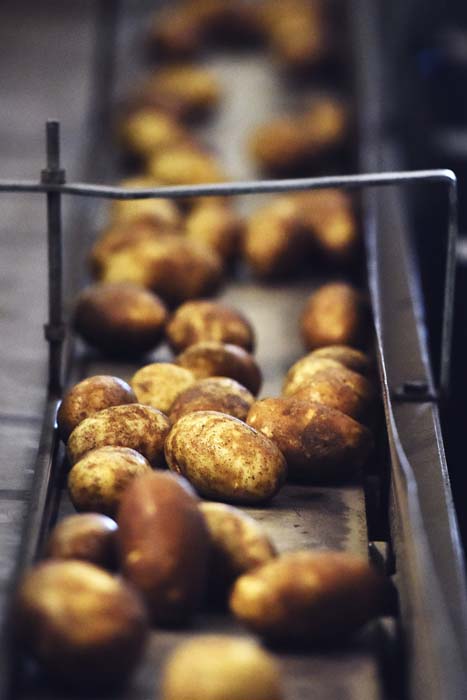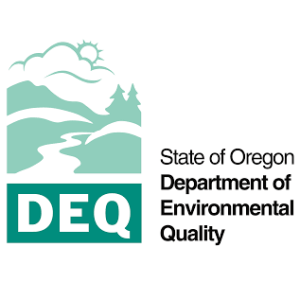Cold, windy harvest could affect Eastern Oregon potatoes
Published 4:15 am Friday, November 8, 2019

- Sorted potatoes travel down a conveyor belt for boxing Wednesday at the Walchli Farms potato processing facility outside of Hermiston.
Farmers in Eastern Oregon are optimistic about the size and quality of this year’s potato crop, despite cold weather during harvest that can lead to issues with starch content and bruising.
Trending
Mark Ward, who grows roughly 200 acres of Russet Burbank potatoes near Baker City, estimated yields are up 5% over the previous year, thanks in part to a more mild summer and much-needed reprieve from wildfire smoke choking out sunlight in the valley.
Ward said potatoes also benefited from a longer growing season, as the first field frost did not come until late September, giving potatoes more time to finish bulking underground. In the past, Ward said farmers could expect frost by Sept. 10.
However, Ward said, when the cold weather did come it was “one of the coldest, windiest harvests we’ve ever had,” with temperatures not getting much over 50 degrees during the day and two below-freezing nights in the teens.
Trending
“It definitely affects the quality,” Ward said. “With colder temperatures, the potatoes are going to bruise more.”
Ward, who serves as chairman of the Oregon Potato Commission, grows spuds for J.R. Simplot Co. that are used to make french fries for restaurants including McDonald’s. Apart from bruising, he said colder weather can prompt potatoes to convert some starches into sugar, which makes for a darker colored, less appetizing french fry.
“That is not what the potato companies want,” Ward said. “They want a white, very light colored french fry.”
Mother Nature has been particularly unkind to potato growers in places like Idaho and across the Midwest, where early frost and freezing weather are forcing farmers to rush harvest or risk losing thousands of acres of spuds.
Though the 2019 harvest was challenging, Ward said the Eastern Oregon crop appears to have avoided disaster.
“We don’t have a horror story to tell, but it’s not perfect,” he said. “I have some concerns about quality coming out of the (storage) shed.”
Oregon grows about 7% of all U.S. potatoes, with 46,000 acres statewide. More than two-thirds of those spuds come from Umatilla and Morrow counties in the Columbia Basin.
Greg Harris, farm manager at Threemile Canyon Farms near Boardman, said snow in March delayed planting by a few weeks, but otherwise he was very pleased with the growing season. The summer was more mild compared to recent years, Harris said, with fewer days of triple-digit heat stifling the plants’ growth.
“We usually get a hot spell where the plants just shut down, and they quit growing for a bit,” Harris said. “We didn’t really see that this year.”
Threemile Canyon Farms is a large, diversified operation with about 8,000 acres of organic and conventionally grown potatoes. The primary customer is Lamb Weston, which makes a variety of frozen potato products at its processing plants in Hermiston and Boardman.
Harris, who recently replaced Threemile Canyon General Manager Marty Myers on the Oregon Potato Commission, said cold weather at the end of September did impact harvest in the basin, as farmers waited for tubers in the ground to reach 50 degrees to avoid bruising.
“There were definitely some farms around that were experiencing lower bruise-free when it got cold,” Harris said.
Harris said he expects average to slightly above-average yields for potatoes. The USDA National Agricultural Statistics Service released its first production report for the 2019 crop on Nov. 8, said Oregon state statistician Dave Losh.
Last year, Oregon harvested 45,000 acres of potatoes at 60,000 pounds per acre, according to NASS. Average production nationwide was 44,300 pounds per acre.
The state’s other big potato-producing region, the Klamath Basin, was bolstered by a wet spring this year that helped ensure full irrigation water supplies for farmers in both Oregon and California.
Dan Chin, who farms on both sides of the state line, said it was a stark contrast to 2018, when water uncertainty due to drought and lawsuits over fish conservation made it difficult to know what to plant.
“The year before, we didn’t know we were going to get water until July,” Chin said. “It’s really hard to make a plan.”
Chin grows 900 acres of conventional and organic potatoes for fresh markets. He said the growing season was cooler overall, and though some late season rains delayed harvest by a few days, farmers are pleased with yield and quality.
“We really produced a nice potato crop,” Chin said. “I think we have the potential to make some money this year.”









